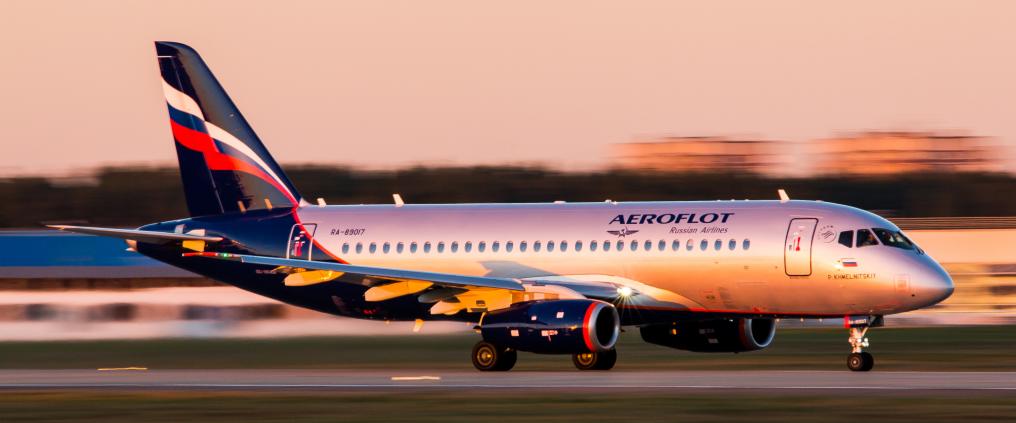1. Sukhoi’s roots go back to the Soviet Union
Sukhoi (Сухой) is a modern plane manufacturer that operates in both military and civil aviation. The company is part of the United Aircraft Corporation, whose main shareholder is the Russian Federation. Italian Group Finmeccanica owns a quarter.
Sukhoi was founded in 1939 to serve the needs of the Soviet Air Force. The founder of the company, Pavel Sukhoi, became the lead designer of Soviet fighter aircraft in the late 1930s. Throughout its history Sukhoi has focused mainly on the production of military aircraft, but it also manufactures commercial passenger planes such as the Superjet 100.
2. The plane has unique seating for shorter distances
Though Russia is a land of vast distances, the Sukhoi Superjet 100 is designed especially for short-haul flights. The twin-engine, narrow-body aircraft has a range of about 3,000 kilometers, which allows a flight from Helsinki to Barcelona, for example. A long-range (LR) version has also been developed. It can fly about 4,500 kilometers.
A distinctive feature of the Superjet is the asymmetric seating: each row has five benches, two on the left and three on the right side of the corridor.
3. It is also operated by energy giant Gazprom
The Russian operator Aeroflot, flying daily to Helsinki, is Superjet's main user in Finland, but the aircraft is also seen at Helsinki Airport in the colors of Russian energy company Gazprom. The company has its own airline, Gazpromavia, who operates the Suhoi-aircraft. The airline’s main task is to support Gazprom's field operations.
4. It is manufactured in the Russian Far East
The Sukhoi airplane factory is located in the eastern corner of Russia, in the industrial city of Komsomolsk-na-Amure, near the Japanese Sea. The region used to belong to China until the 19th century: it was annexed to Russia only in 1858. The name of the city originates from the Communist Youth Organization of the Soviet Union, Komsomol.
5. There’s a special version of the plane for athletes
SportJet is a special model based on the Superjet 100, which can be fitted with a training area and 45 business-class seats with special features designed for athletes. The seats include devices for tracking, for example, the athletes' pulse, blood pressure and oxygen content. Coaches are able to analyze games on large screens.
Sources: Aviation Voice, Wikipedia, Iltalehti
Image: Sukhoi Civil Aircraft Media Center, Copyright Nikolay Krasnov



